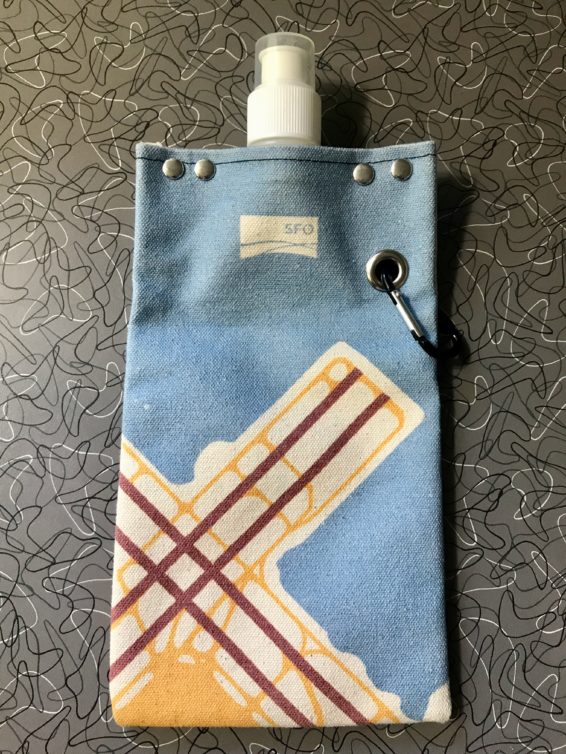
A SFO-branded reusable water bottle. This is probably a good enough reason to never use a plastic water bottle again. – Photo: AirlineReporter
First off, let’s be clear, I like the environment and want to not only do my part to make sure we have a nice little planet to live on, but also to motivate others. However, the plastic water bottle sales ban at the San Francisco International Airport (SFO), taking effect on August 20th, got me thinking. Do these sorts of changes work as well in a ’œtrapped’ world, like an airport? I say that since people in an airport do not have as much choice’¦ they mostly can only pick among the options given to them on the airside (after security).
Over the years, airports have grown the choices airside by leaps and bounds. Heck, many airports are more like shopping malls than an airports. But in the end, you are limited. If your local grocery store decides to no longer sell a product and it is super important to you… cool, just go down the street to the next one. At the airport, that is going to be a bit more of an ordeal.
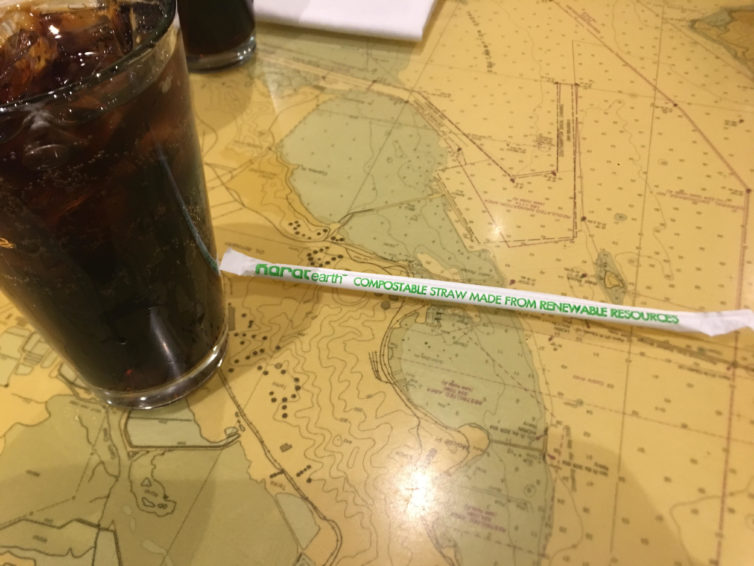
My paper straw that I got to try while flying through SFO last time – Photo: David Parker Brown
I will say that I was shocked by some of the numbers. On average, SFO sells about 10,000 plastic water bottles per day, and that equals 3,650,000 per year. No question that is A LOT of plastic and even if they are all recycled (saying they are being recycled), it is not a good thing for the environment. It actually makes me pretty sad so many people do not bring their own reusable bottles (my fianc brings one for both of us and is always reminding me to hydrate). Conversely, that high number of bottles also shows there is A LOT of demand from people to drink water in plastic bottles. Is it fair to require passengers to use other options?
Sure, sure, getting a reusable plastic bottle is not that much to ask, and the airport is providing some other good options, including water in other packaging (like aluminum and glass). But how expensive will those be and how will that impact a family of four on a fixed budget? Will passengers accept the change? Should there be some line of convenience vs doing what’s right, and is this new policy crossing it? Honestly, I don’t know the answers. But let me share with you some of my thoughts and I hope that we have a good conversation in the comments…
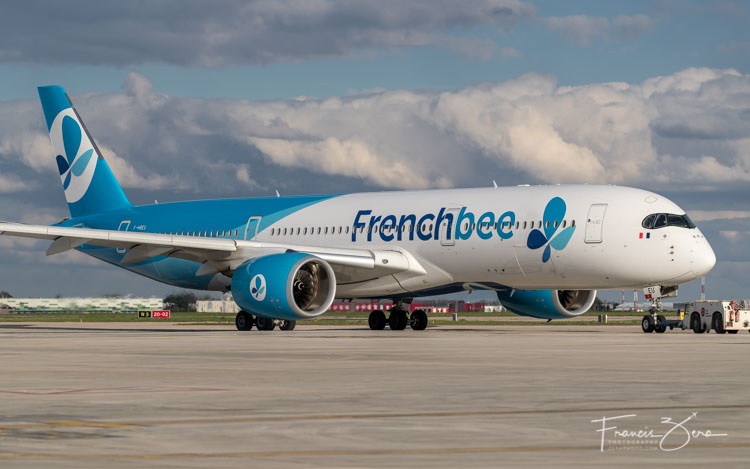
A French Bee A359 on the taxiway at Orly Airport in Paris. It’s a very lovely livery, IMHO.
Can you have low-cost airfare and elegant service? French Bee definitely wants you to think so.
French Bee is a relatively new low-cost carrier, having begun operations in September of 2016. They’re based at Paris Orly Airport (ORY).
With a current fleet of three Airbus aircraft (one A330-300 and two A350-900s) flying to five destinations, they’re a relatively small player, and they’re France’s first LCC. They also have one A350-1000 on order, currently slated for delivery later this year.
From their ORY hub, they fly to San Francisco, Punta Cana in the Dominican Republic, Papeete, Tahiti, and Saint Denis, Reunion, all of which are vacation destinations for French travelers.
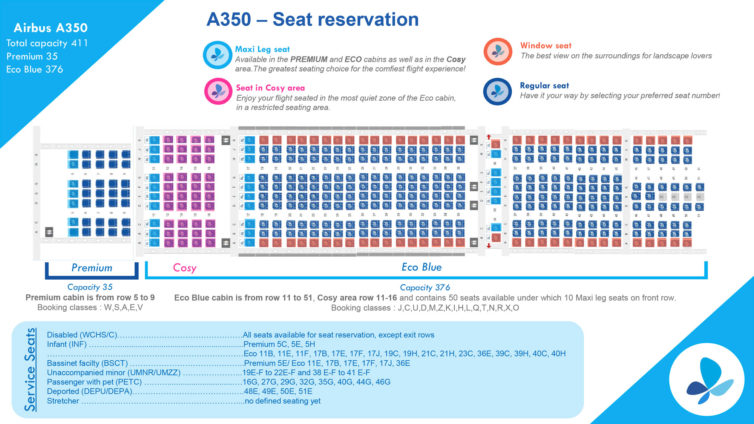
French Bee’s A350-900 seat map
French Bee is part of the Dubreuil group, which also owns Air Caraîbes, a somewhat larger airline which primarily serves Caribbean holiday destinations from the same ORY base.
Interestingly, French Bee started out being named French Blue. When the airline applied for a U.S. air carrier permit in November 2017, JetBlue objected to the idea of allowing another airline to operate in the United States that had the word “blue” in its name. That eventually led to a rebrand as French Bee in January 2018.
With a target audience of budget-minded holidaymakers, the airline’s pricing is very competitive; fares typically run less than $700 return between SFO and ORY. An additional $250-ish buys you a premium-class seat (more on that later).
There are 411 seats on a French Bee A359: 35 Premium, 50 Cosy, and 326 in Eco Blue.
I flew with French Bee on their SFO-ORY-SFO route the first week of April, traveling in 10-abreast Smart Economy/Eco Blue on the outbound leg and in their Premium cabin on the return flight.
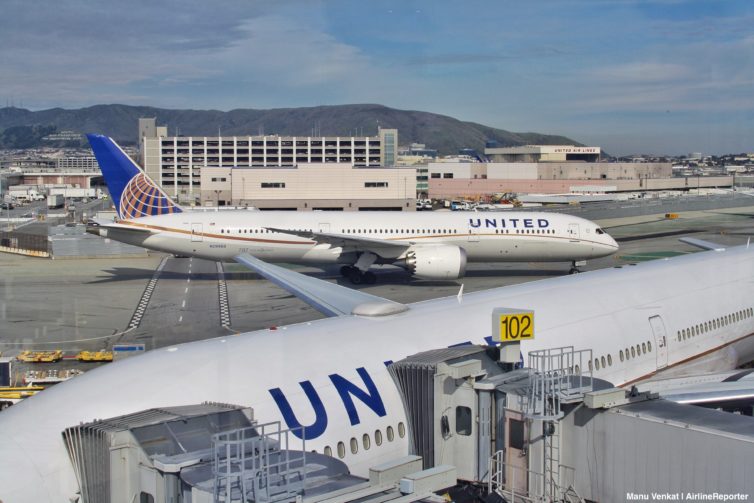
We #AvGeeks are easy to please. Just give us a good view of the planes, and we’re golden. Too few airports in the US have official planespotting points, but San Francisco International (SFO) just made that situation a bit better. On February 6th it unveiled a new outdoor observation deck at the very tip of the international terminal’s G concourse.
How good is it? Very good. How close are you to the planes? Very, very close.
It’s post-security (AKA airside) so you need to be flying United or one of its Star Alliance partners to have access. But don’t worry landsiders: later this year SFO will open a pre-security observation deck in T2.
For now, read on for more info and photos from SFO’s new observation deck!
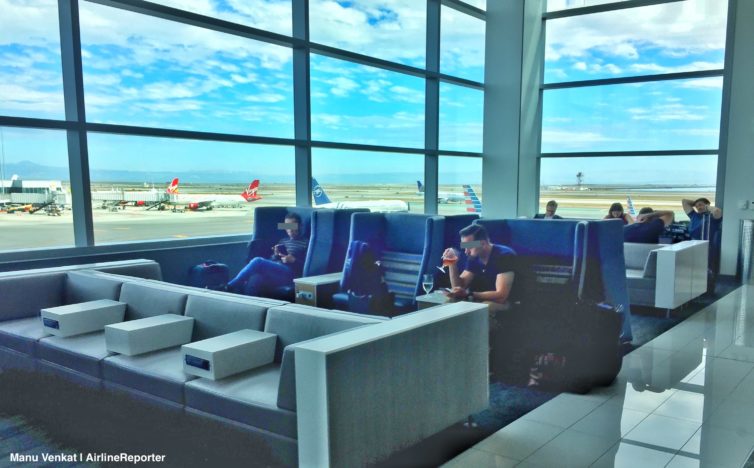
I’m biased as a Bay Area resident, but I think San Francisco SFO offers some of the best casual plane-spotting in the country, thanks to its two set of parallel runways located relatively close to the terminal buildings. Many of the airport’s premium lounges are located on the floor above the general concourse, giving lucky lounge-goers some especially good views. As if the lounge life wasn’t already awesome enough.
Delta doesn’t have a formal hub in San Francisco. But as an endpoint of the airline’s premium transcontinental service from New York JFK, SFO is important enough to earn a Delta Sky Club. I dropped by recently and found a lot to like, from fresh decor and furniture, solid food and drink, and (most importantly) great views of the ramp and runways through floor-to-ceiling windows. Read on for an overview of what you can expect if you drop by Delta’s Sky Club at SFO.
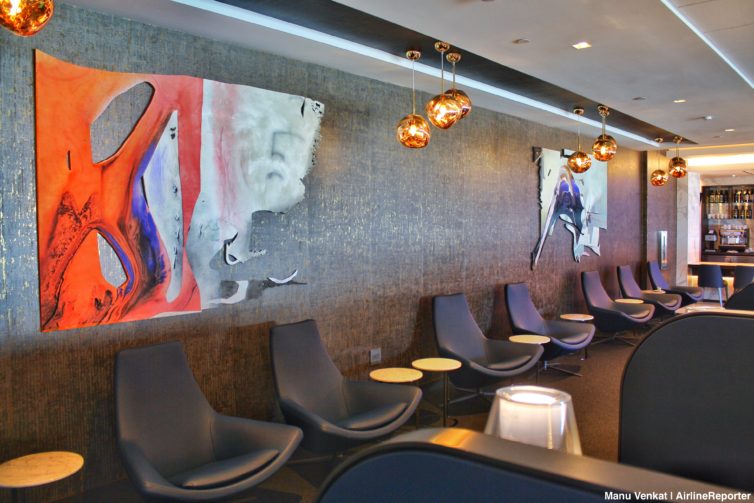
Here in 2018, we know two things about United’s new premium Polaris product. First, from what we’ve seen of it, it’s pretty awesome. Second, we haven’t actually seen that much of it. Seriously, the rollout has taken its sweet time! In the friendly skies, most of United’s long-haul fleet is still flying the pre-Polaris product. And on the ground, the Chicago Polaris lounge — which is amazing, by the way — has been the lone lounge of its kind for over a year.
That is, until now! At long last, United opened its second Polaris lounge at its San Francisco International Airport hub. We got the chance to swing by shortly after it opened, and it turns out the place was well worth the wait. Read on for an in-depth photo tour of United’s second-ever Polaris lounge, from dining and drinks to shower rooms and aircraft views.
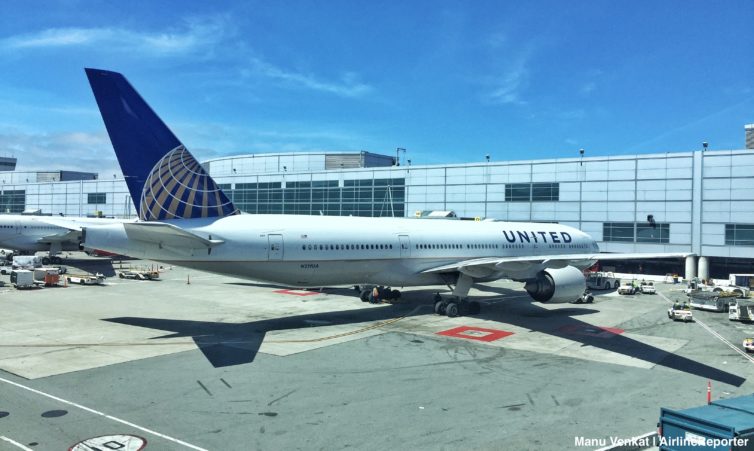
Are you flying Polaris business class overseas on this beauty? Then welcome to the Polaris lounge!







